The $61,000 Alfa Romeo Stelvio is an improvement on the original that made driving this Italian SUV sheer bliss
Matthew DeBord

- I drove a $61,240 Alfa Romeo Ti Sport SUV, complete with Alfa's Q4 all-wheel-drive system.
- This is a refreshed Stelvio; I'd enjoyed the SUV in 2018, but I had a few complaints about the interior and the infotainment system.
- Alfa Romeo has corrected the Stelvio's flaws in the updated version.
- My test vehicle had a 2.0-liter, inline four-cylinder turbocharged engine under the hood. It makes 280 horsepower with 306 pound-feet of torque and is unchanged from the previous version.
- With my problems addressed, I couldn't find much to dislike about the Stelvio this time around, and driving it was sheer bliss.
- Visit Business Insider's homepage for more stories.
Alfa Romeo has been in business for 110 years and for about 106 of those years, it didn't need an SUV.
That all changed as luxury 'utes took over the world and compelled parent Fiat Chrysler Automobiles to steer the legend toward a suburban people-hauler.
Or not, as the Stelvio I drove in its original iteration back in 2018, while fine at hauling people, was far more optimized to provide driverly thrills.
I had complaints back then — about the interior's lack of premium-ness and the absence of a good infotainment system. And lo! Alfa listened. They course-corrected with the refreshed Stelvio.
Was it enough? Read on to find out
Read the original article on Business InsiderSo what's the verdict?
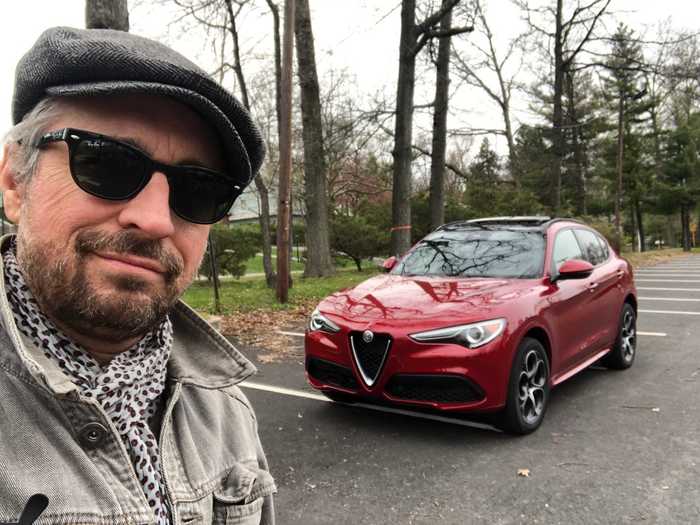
Alfa Romeo fixed everything I disliked about the first-iteration of the Stelvio. The interior now exudes a true, premium vibe, and the infotainment system is greatly improved.
As far as the driving goes ... well, I was spoiled. I made a pair of roughly 200-mile round-trips in the Stelvio, driving through nearly deserted Manhattan streets and on traffic-free New Jersey and New York highways. This provided me with the rare opportunity to see what the Stelvio could do as a relatively high-performance SUV (I didn't have the Stelvio Quadrifoglio, but in some ways sampling this less powerful trim level was better for the freeway-cruising test).
For starters, the Stelvio is quick, and notably so for a machine that's underpowered on paper, with a mere 280 horsepower. How does 0-60 mph in about 5.5 seconds strike you? It struck me dandy, but while straight-ahead speed is lovely, what the Stelvio does best is what I really like about most Alfas of the current vintage: it feels light and dynamic.
I say "most" because I didn't enthuse over the Stelvio's tossability when I reviewed it in 2018. The 2020 refresh shouldn't have changed that impression — the SUV is mechanically unchanged. But I think having more open road to work with showed what the Stelvio could really do.
I should have wanted for the the 505-horsepower, 2.9-liter, twin-turbo V6 in the Quadrifoglio, formerly a Euro-only option but now available on these shores. But I didn't! My Ti Sport was satisfying, even when giving up over 200 horsepower. My case here is that while 505hp is awesome, you're going to feel it only when accelerating, and unless you're willing to see blue flashing lights in the rearview, those feelings should be brief. But with the Ti Sport Stelvio, you can get into all the vehicle's power.
The four-banger should struggle at higher speeds, or even showcase its lack of displacement under throttle pressure, but it doesn't. I knew about this already; the 2018 version of the Stelvio offered punchy performance with no turbo lag and no bothersome engine strain. In the 2020 version, I was just able to enjoy it even more.
It's a shame that I didn't more enthusiastically use the long paddle shifters, but that's a feature I find more fun in a beefier-motored car. You make up for the inability to violate the speed limit by working the engine through its torque curve, evoking growls and snarls from the exhaust ports. I was content to fly along the open highway on full automatic as the wind rushed around the Stelvio's stylish curves.
As for making a pretty good car better, it wasn't a daunting proposition for Alfa. I wasn't the only reviewer or customer who disliked the infotainment system and thought the interior failed to live up to the brand's luxury promise. A new infotainment setup and some moderate interior upgrades here and there did the trick. This vintage of the Stelvio is now fully competitive with the likes of Jaguar and Porsche, and might actually have a slight edge over the more austere aesthetic that BMW and Audi favor.
2018's Stelvio was $53,000 as-tested, and 2020's was just over $61,000, benefiting from some extra goodies and advanced driver-assist technology. That's a decent price difference, but the package I tested this year was significantly more appealing than what I drove in '18, so the additional cost is mostly justified. The refreshed Stelvio is demonstrably a more premium ride.
The bottom line is that while I certainly liked the Stelvio in 2018, I love the snazzy SUV in 2020. In a word, "Bravo!"
To the right on the shifter is a small key-fob holder.
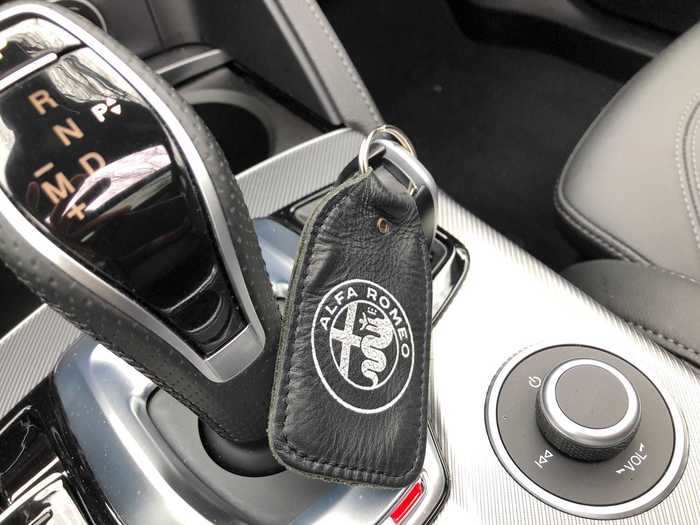
The Harman-Kardon eight-speaker audio system sounds pretty good, although I've definitely experienced better in this segment.
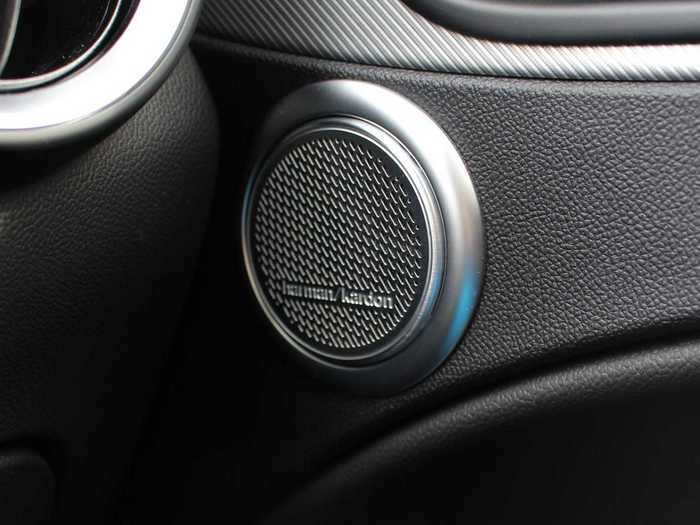
A wireless charge pad is tucked into the center storage bin.
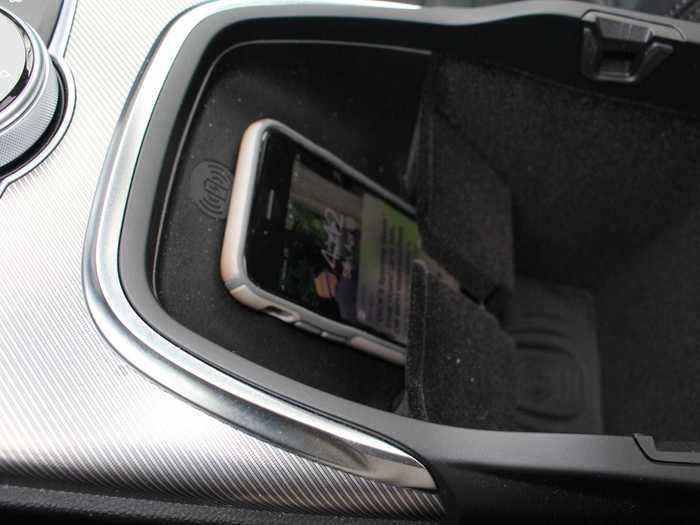
Bluetooth connectivity is a breeze, and you have USB device options. There's also a 12-month introductory SiriusXM subscription.
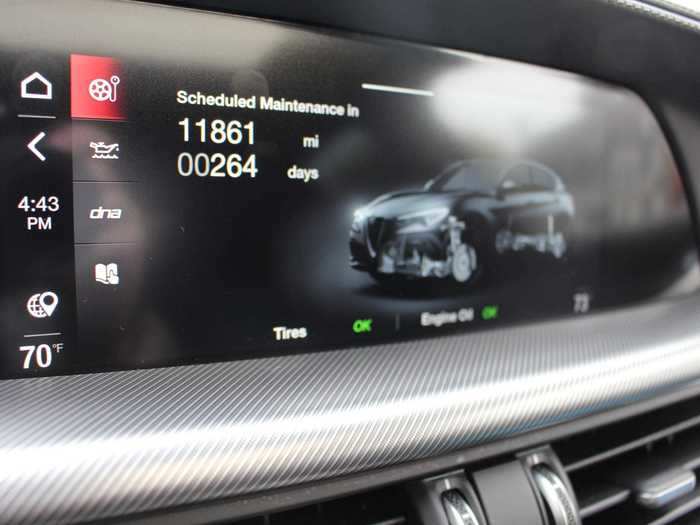
The system is no longer dated relative to the competition. The renderings are crisp, lag-time is insignificant, and you always have Apple CarPlay and Android Auto to fall back on.
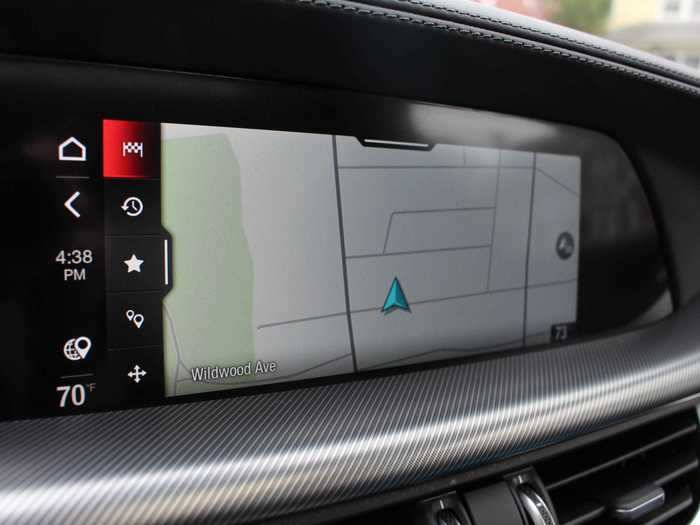
... Or by interacting with the 8.8-inch central touchscreen.
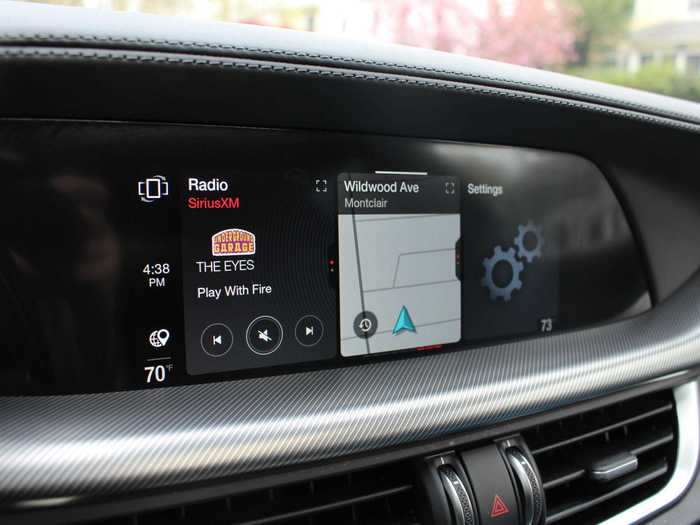
Infotainment can be operated using the control center below the shifter ...
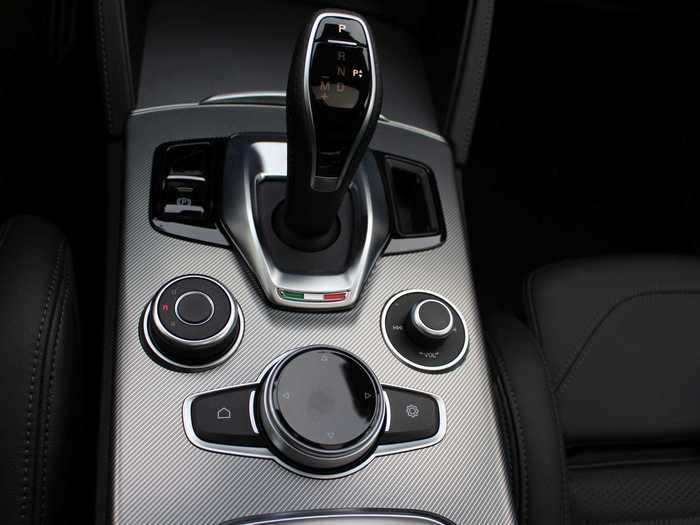
A pair of cupholders hide beneath an elegant sliding cover.
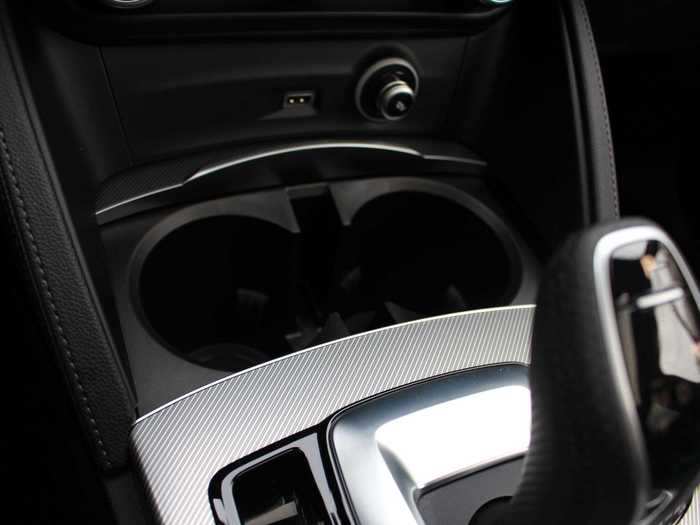
All in all, the Stelvio's controls are blissfully simple and user-friendly.
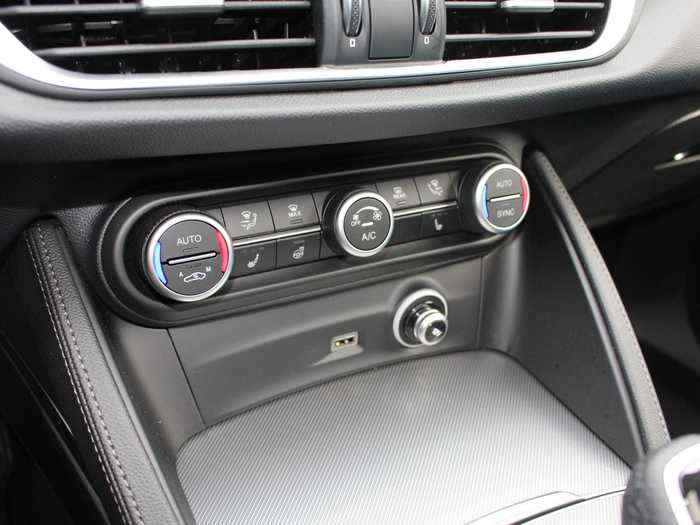
... and the Stelvio's shout-out to its 110-year old Italian heritage is thoroughly modest. The DNA drive-mode control is the knob on the left, and the audio system is partly controlled by the know to the right.

The shifter is a straightforward PRND joystick ...
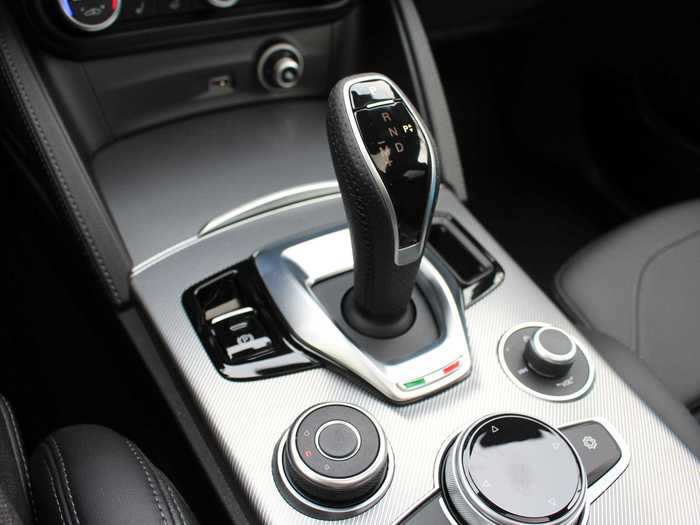
The sporty interior details are quite reserved.
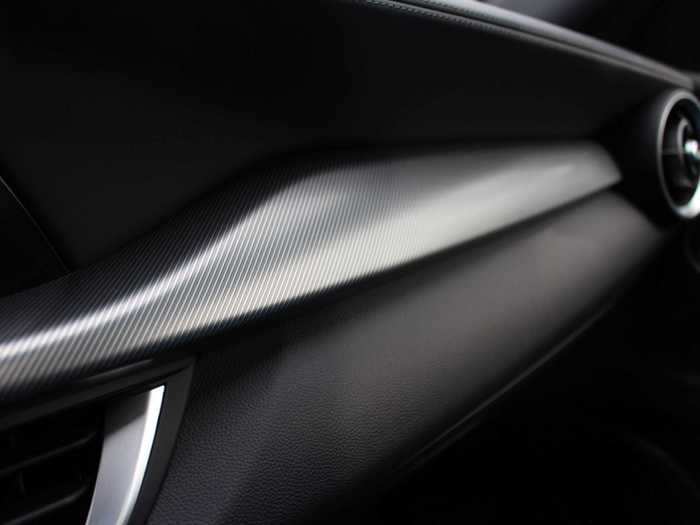
And they're mounted to steering column, not the wheel, so they don't move around.
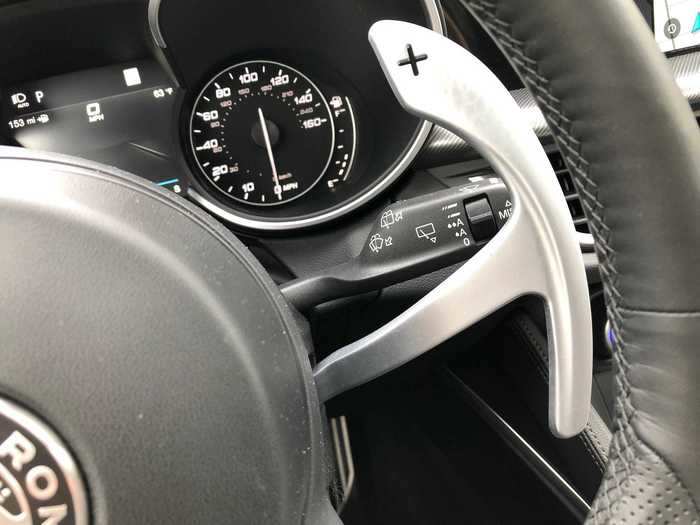
They're really small pieces of automotive sculpture.
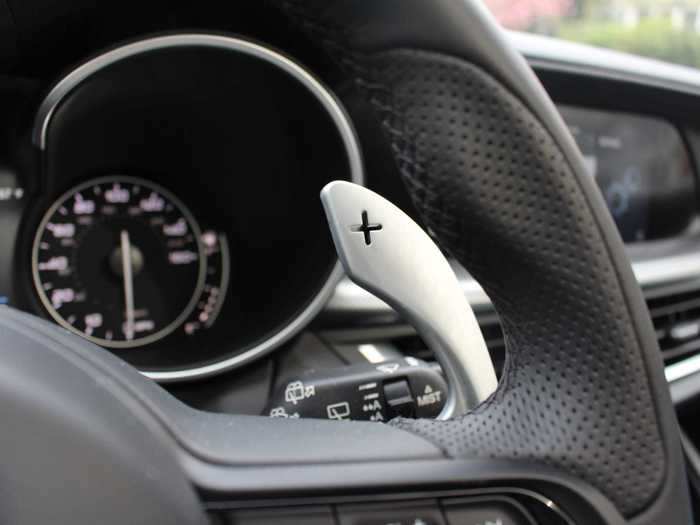
Aluminum paddle shifters are part of a Ti Sport AWD package, adding $2,500 to the sticker price.
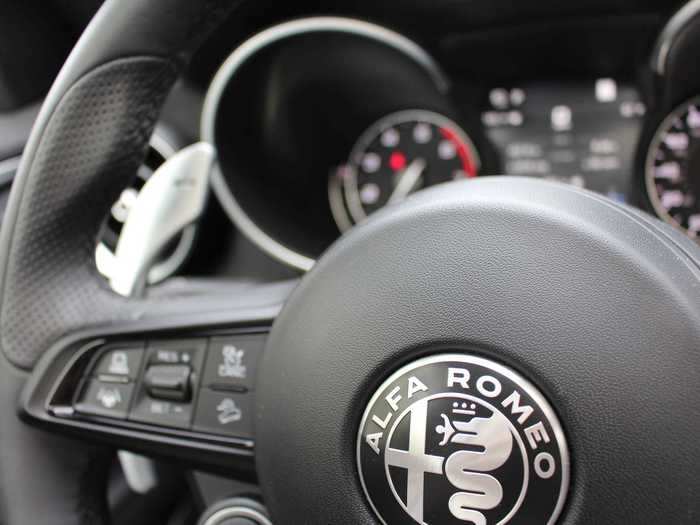
The steering wheel itself has been reworked. The wheel itself is thicker, and the leather wrap is more plush. Start-stop continues to live on the wheel.

The center screen can be customized for information display. It's also where the driver-assist layout is depicted, including adaptive cruise control, lane-keep assist, and a steering-assist feature.
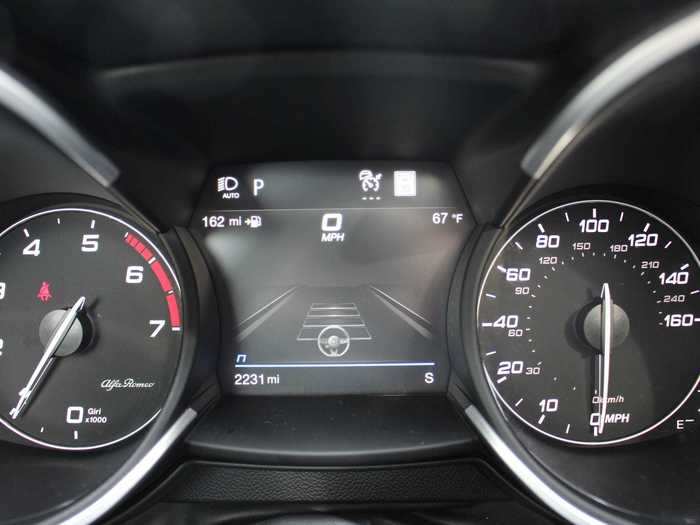
The badge continues to look gorgeous in metallic tones, and the digital-analog gauges, mounted in deep, twin binnacles are super-serious.
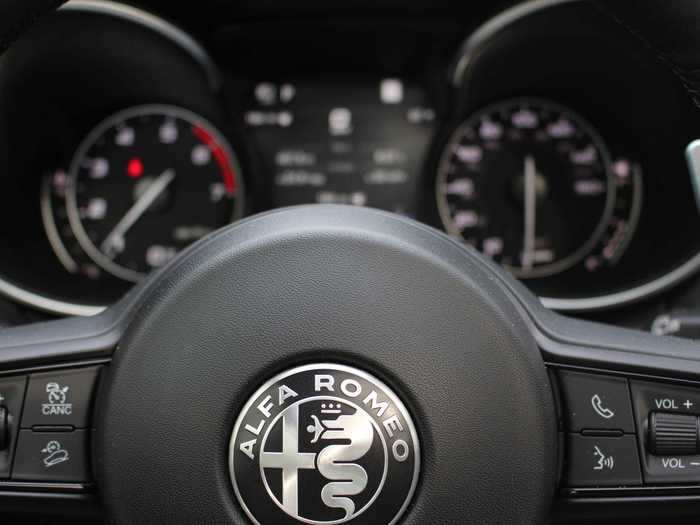
The Stelvio is supposed to be a driver's car, of course — the Quadrifoglio version, after all, lapped the famous Nürburgring track in Germany in 7 minutes, 51 seconds.
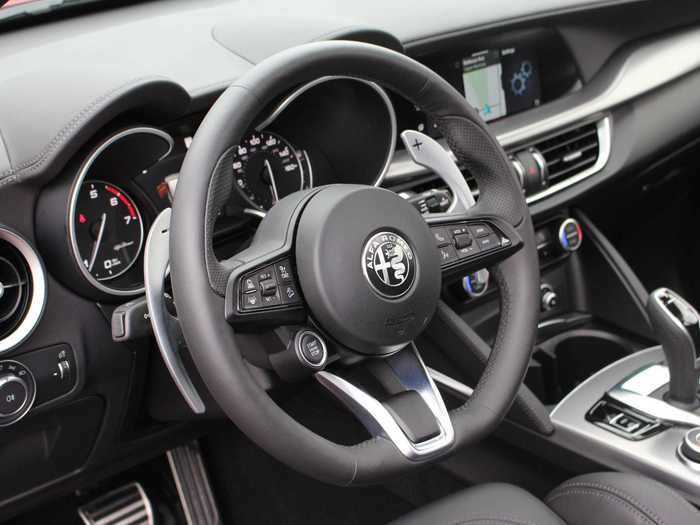
The dual-pane moonroof fills the cabin with natural light. I couldn't have been happier with how Alfa improved the interior of the Stelvio.

The rear bench seat is less pleasant than the fronts — and legroom isn't great.
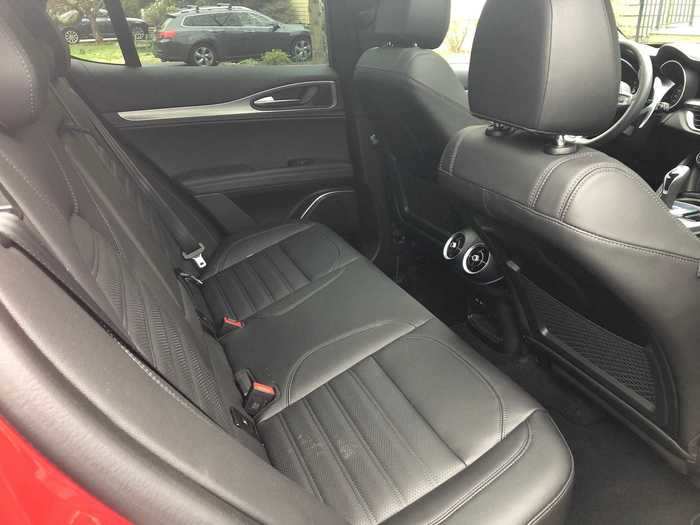
The black interior is notably improved from the last time I slipped into a Stelvio. Overall, the entire vibe is more premium, without sacrificing anything to overt luxury or excess.
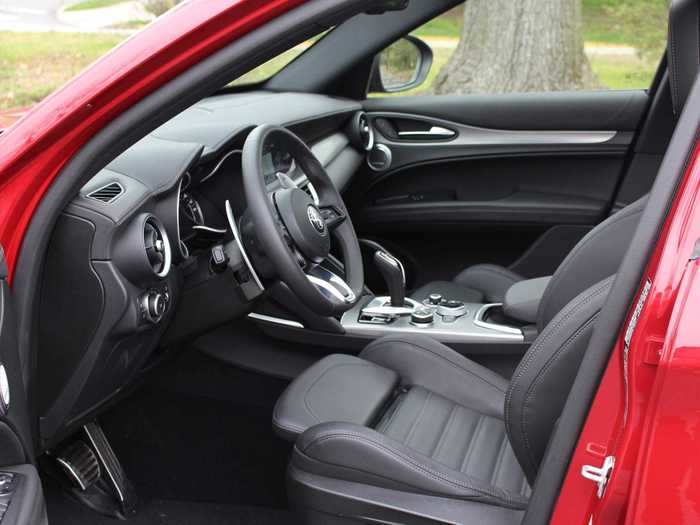
I always have to complain about the cheap plastic hood latches on some Fiat Chrysler vehicles. I'm convinced this flimsy thing will break inside a year. On the plus side, the bright yellow color would make it easy to find once it fell off.
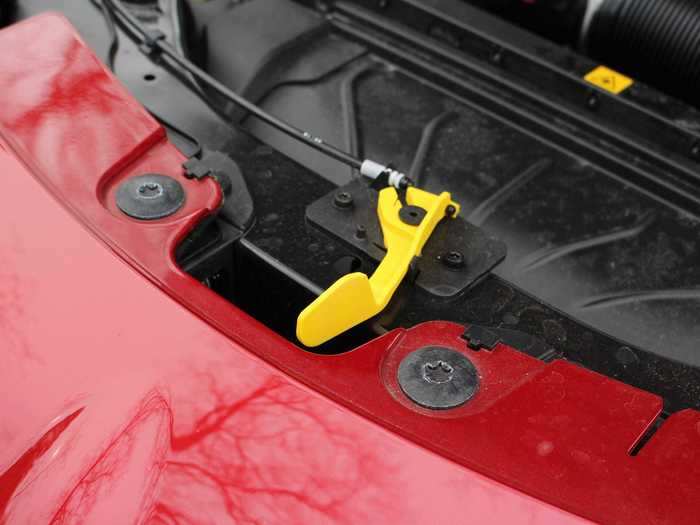
Fuel economy is decent, at 22 mpg city/28 highway/24 combined. The 0-60 mph time has been clocked at about 5.5 seconds. Mated to an eight-speed automatic with three somewhat baffling driving modes, called "DNA" (D for "Dynamic" is the sporty one), the motor is peppy and crisp.
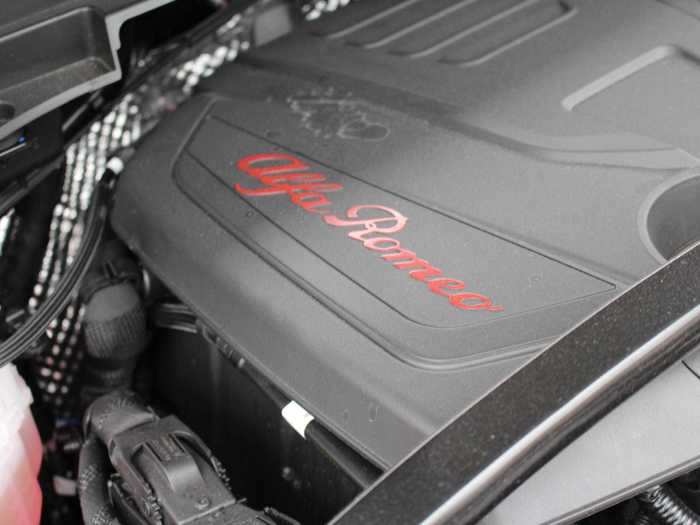
As with our 2018 tester, the 2020 edition has a 2.0-liter, inline four-cylinder turbo engine under the hood. It makes 280 horsepower with 306 pound-feet of torque.
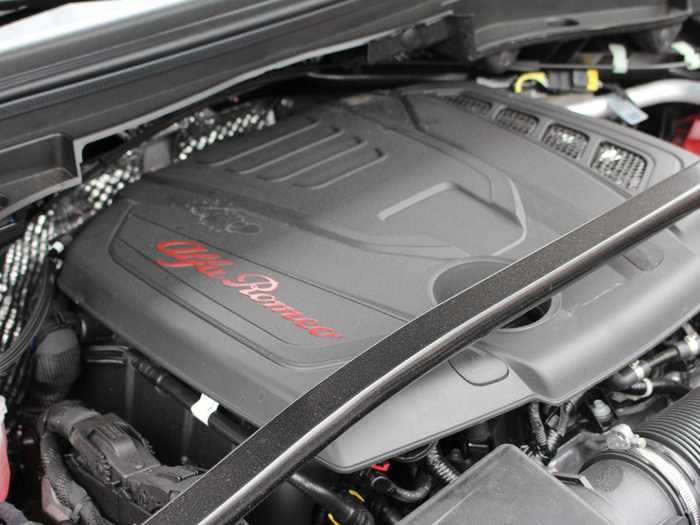
I almost never do this, but I photographed the Stelvio with its moonroof open because the vehicle manages to still look great with with it engaged.
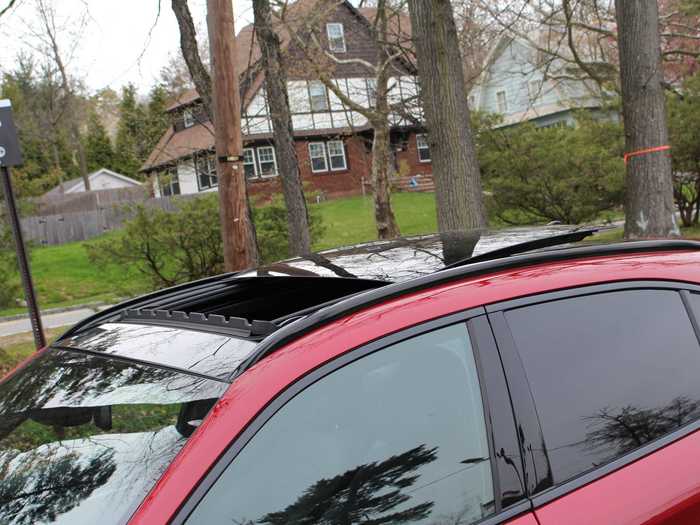
The gloss-red brake calipers are a nice visual touch, but the Stelvio Ti Sport's brakes weren't especially beefy.
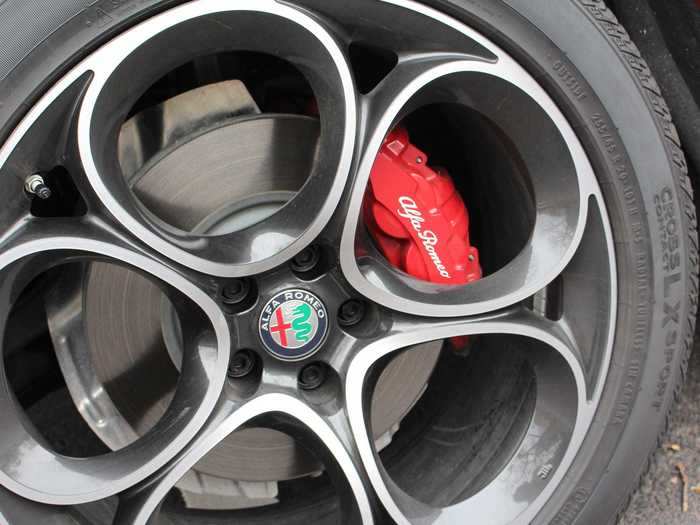
My tester wore Continental CrossContact LX rubber on 20-inch "Sport 5-Hole" aluminum wheels, which evoked a five-leaf clover.

Cargo capacity spans 57 cubic feet when maxed out. Even with the second row of seats up, I still had plenty of room for the usual suburban stuff. I had to drop a seat, however, to accommodate a large box.
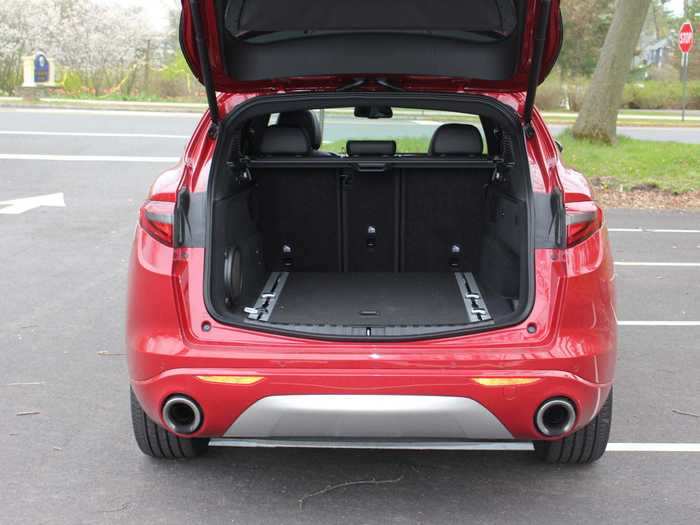
The dual exhaust pipes aren't fooling around — they're like a pair of canons.
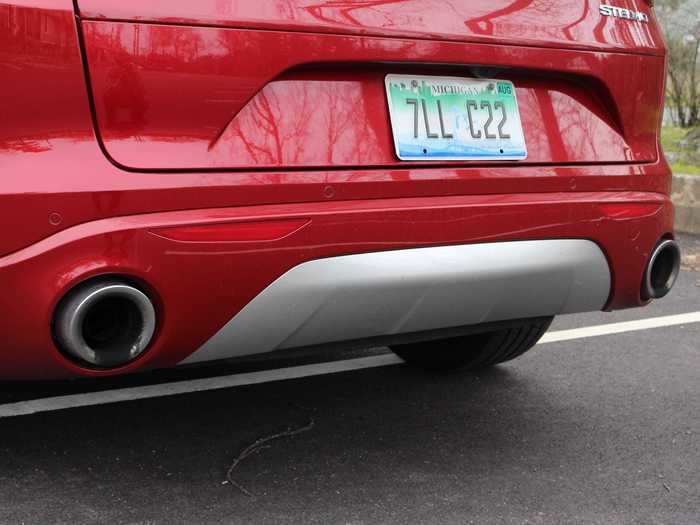
ALFA is an acronym for "Anonima Lombarda Fabbrica Automobili," the full name of the original company, dating to the early 1900s. The cross-and-serpent logo is unmistakable (and somewhat inexplicable).
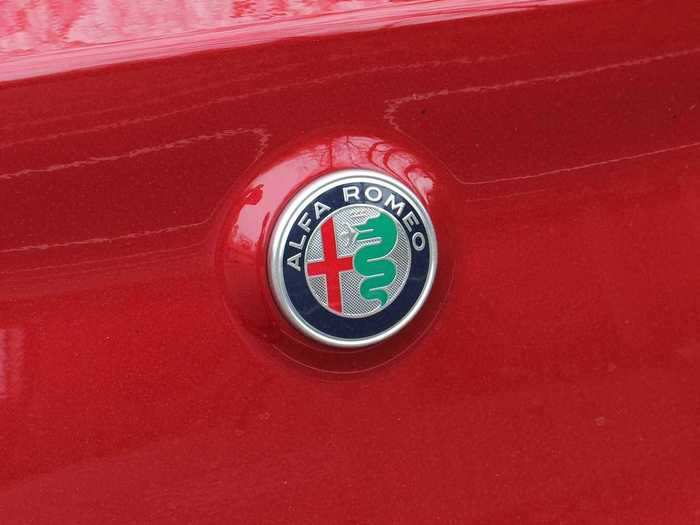
"Stelvio" comes from the Stelvio Pass, a high mountain road in Italy that's full on intricate curves.
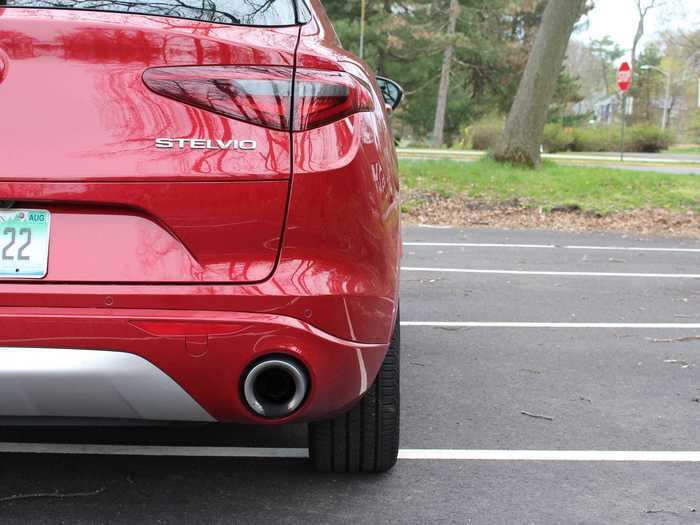
The Q4 all-wheel-drive system is good at biasing the rear wheels for performance. Not sure how it would perform off-road, and the towing capacity for 2020 hasn't been upgraded from 3,000 pounds.
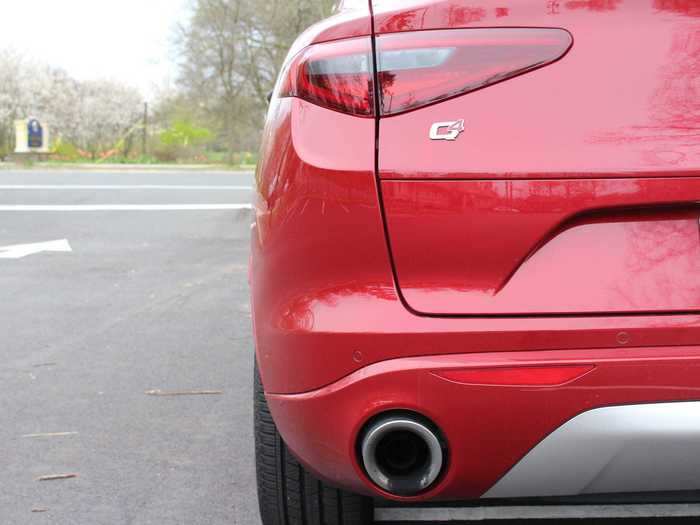
I still don't much care for the tail lights; they don't echo the smooth aggression of the headlamps.
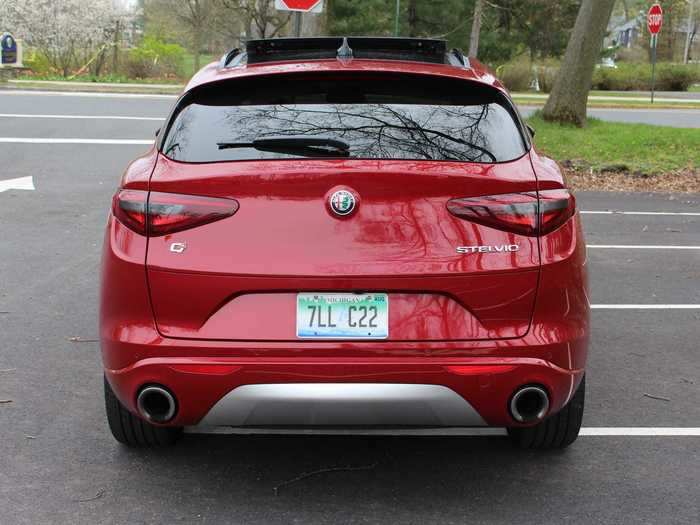
Only the Jaguar F-Pace presents as appealing a rear view: The Stelvio's posterior here is sleek, shapely, and yet powerful.
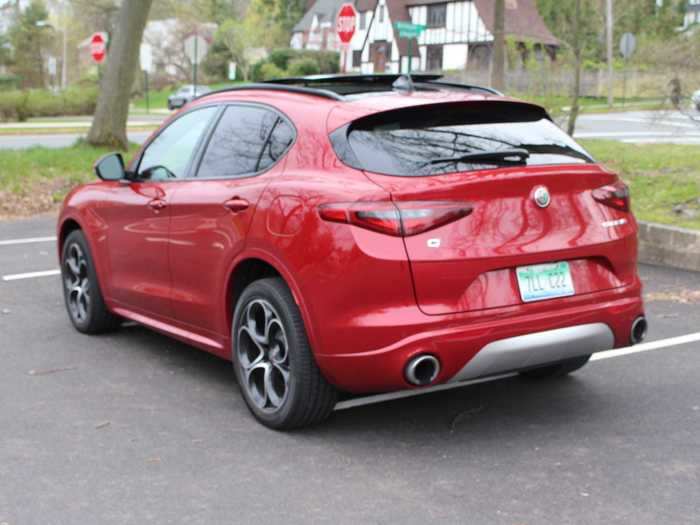
Some of my favorite headlights in the business — stylish and aggressive.
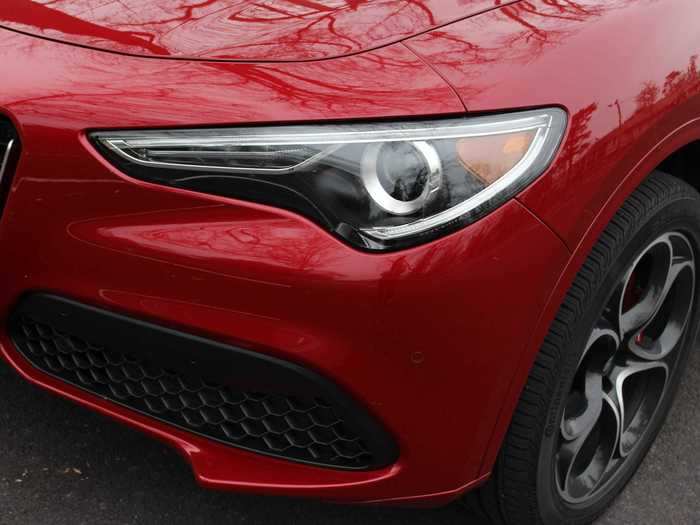
Some grilles have too much chrome, some are too graphically busy, and some are too blacked-out. The Stelvio's is none of the above. And the badge is just beautiful.
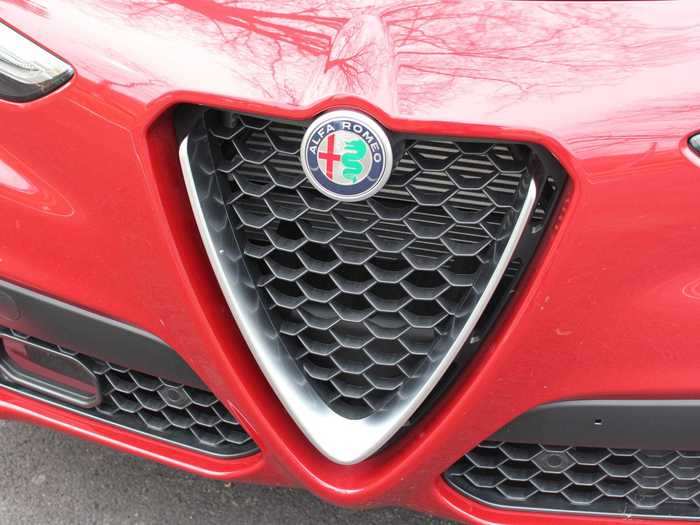
Some might complain that the black honeycomb scoops are too much. I didn't mind them.
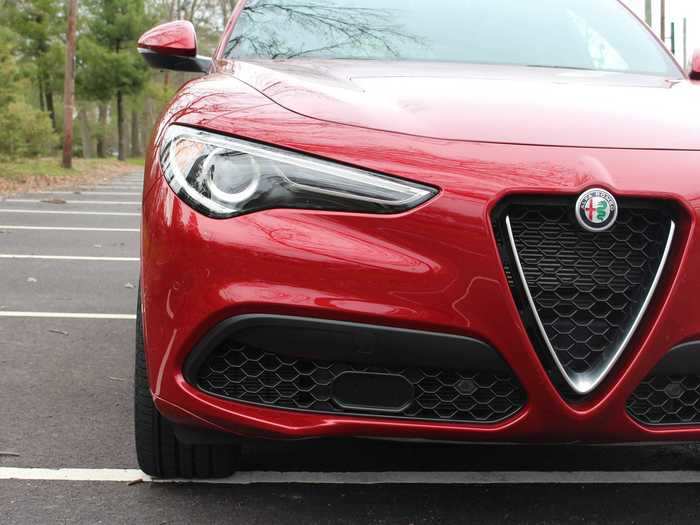
The fascia is the Stelvio's standout feature. The V-shaped "Scudetto" shield grille has been an Alfa trademark since the early 1930s.
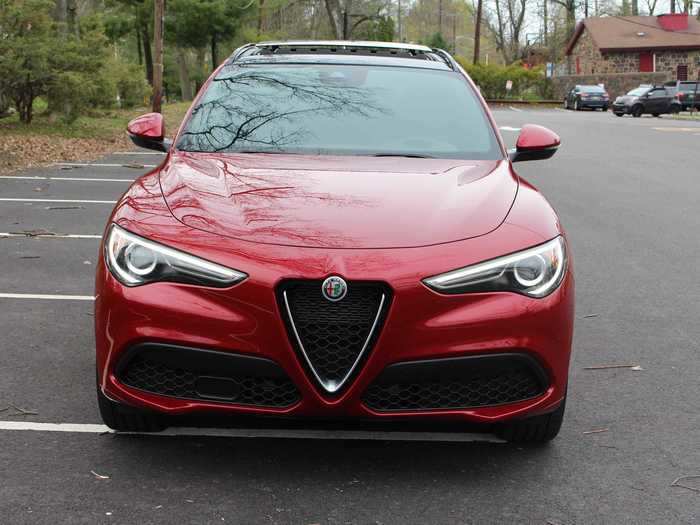
The 2020 refresh didn't mess with the fantastic good looks — the Stelvio remains one of the most, if not the most, eye-catching luxury SUVs on the market.
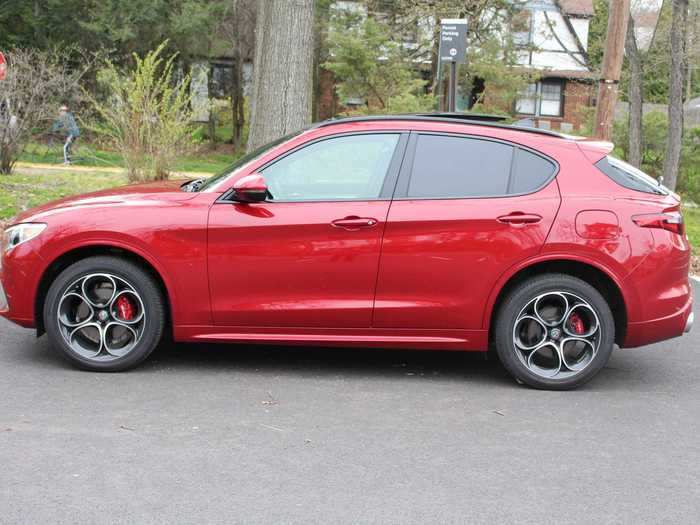
Took me back to 2018, when I first got my hands on the Stelvio, Alfa Romeo's first crack at an SUV.
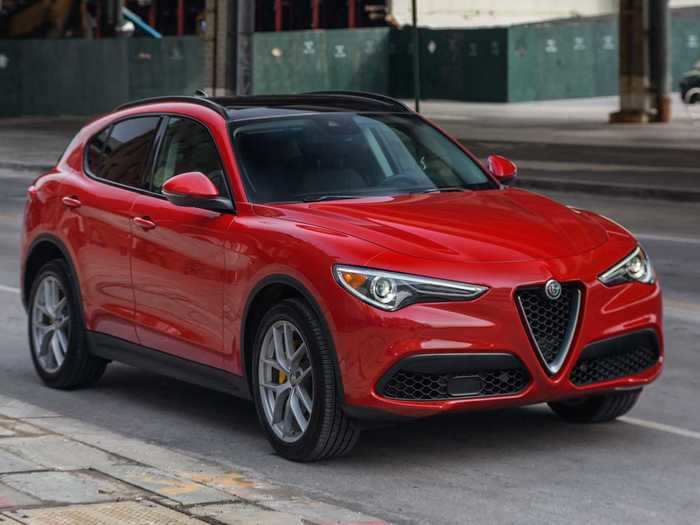
My 2020 Alfa Romeo Stelvio tester arrived in Ti Sport trim, wearing a Rosso Competizione Tri-Coat paint job that was simply luminous. Price? $45,745 before a lot of options took it to $61,240.
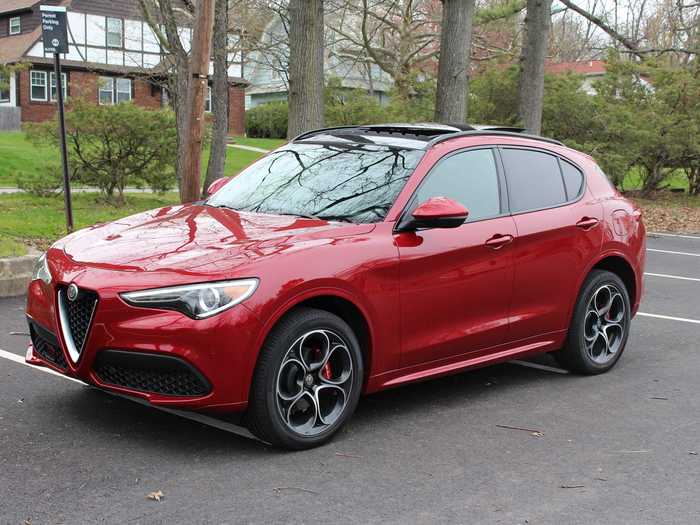
READ MORE ARTICLES ON
Popular Right Now
Popular Keywords
Advertisement